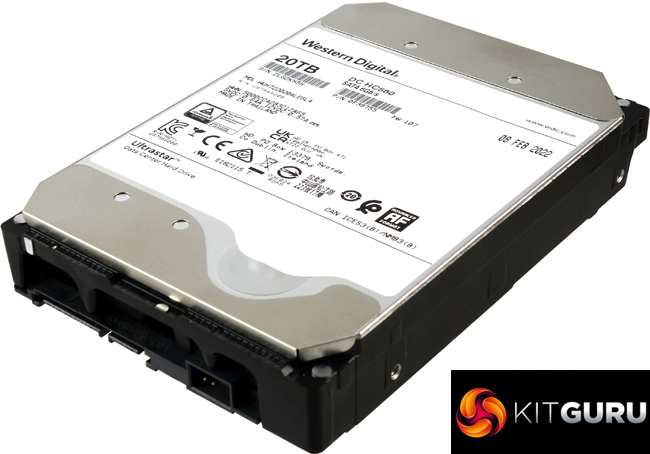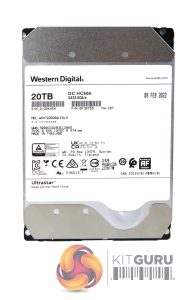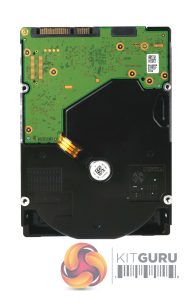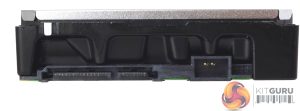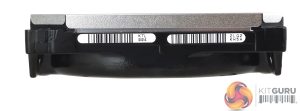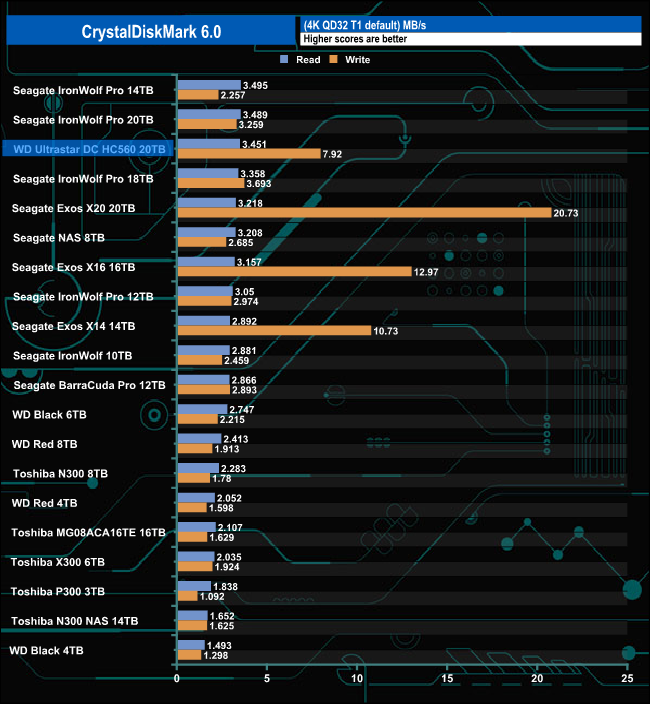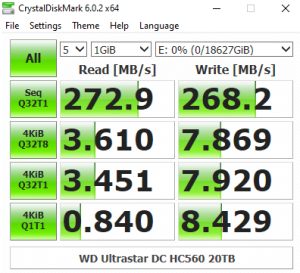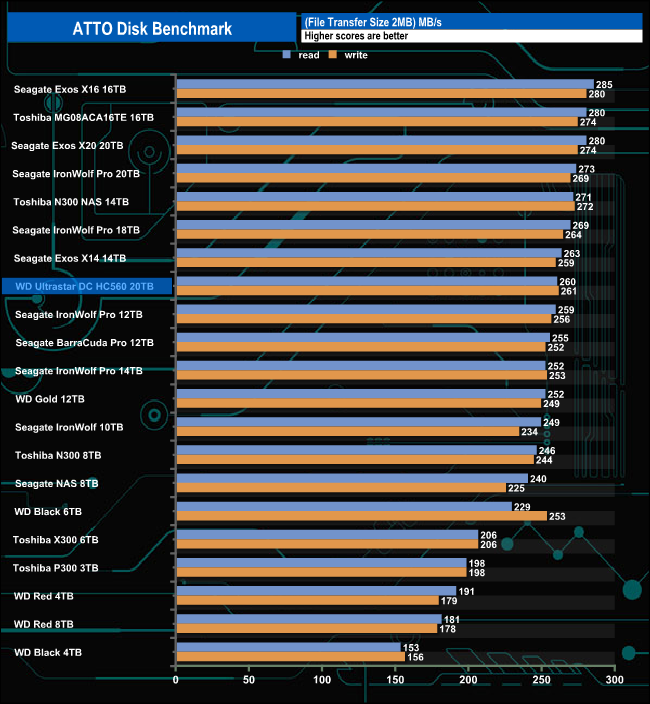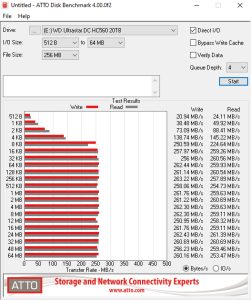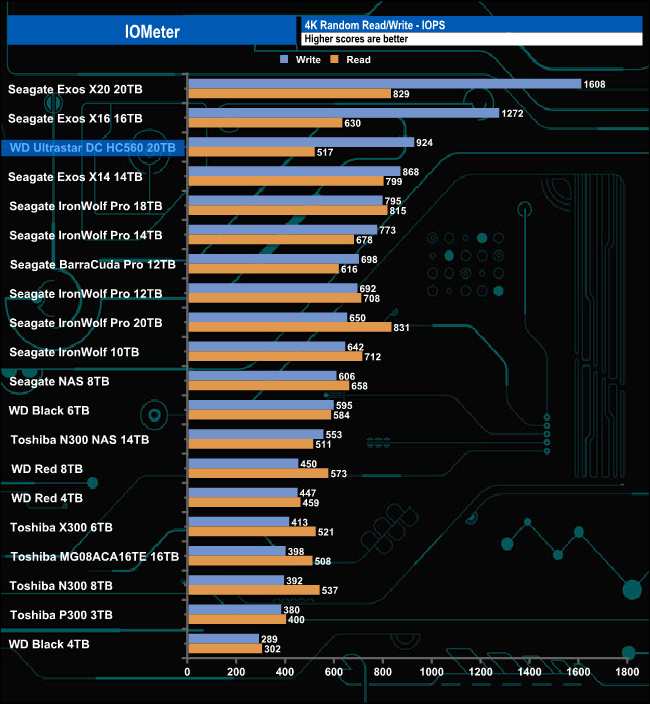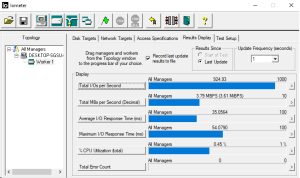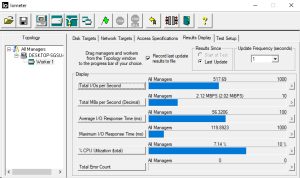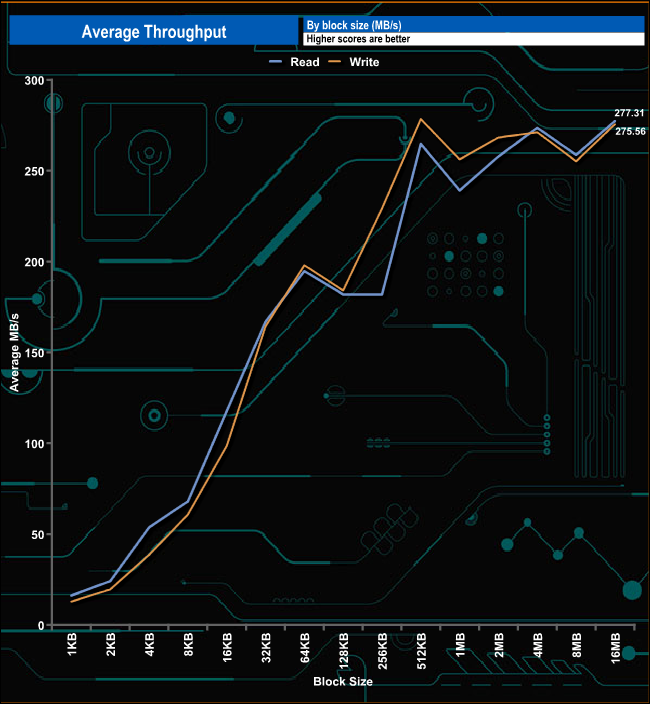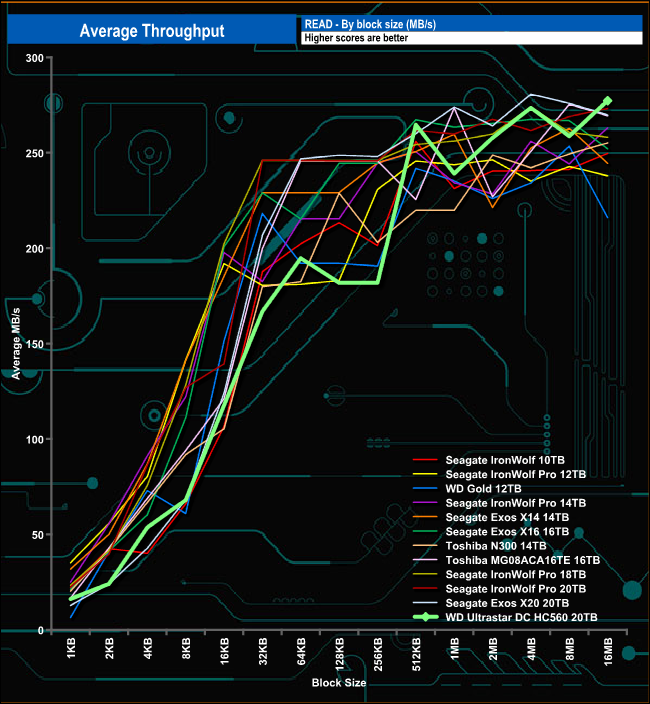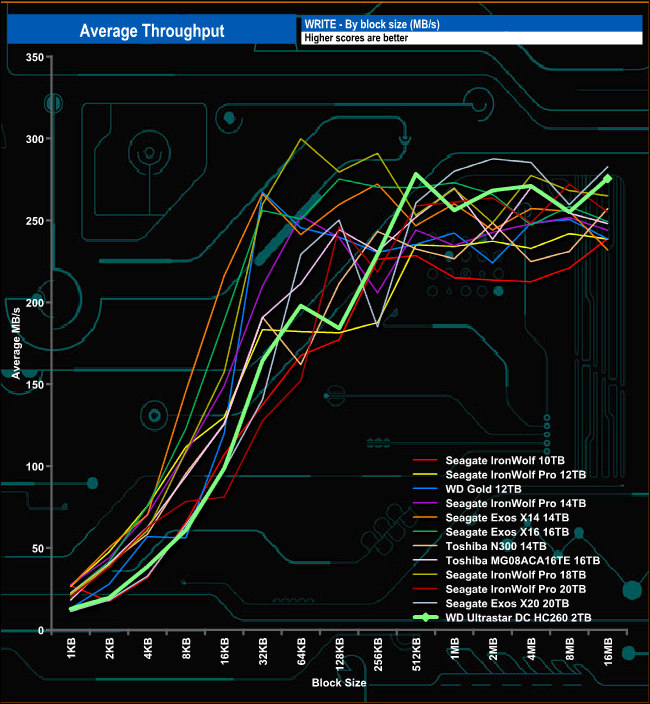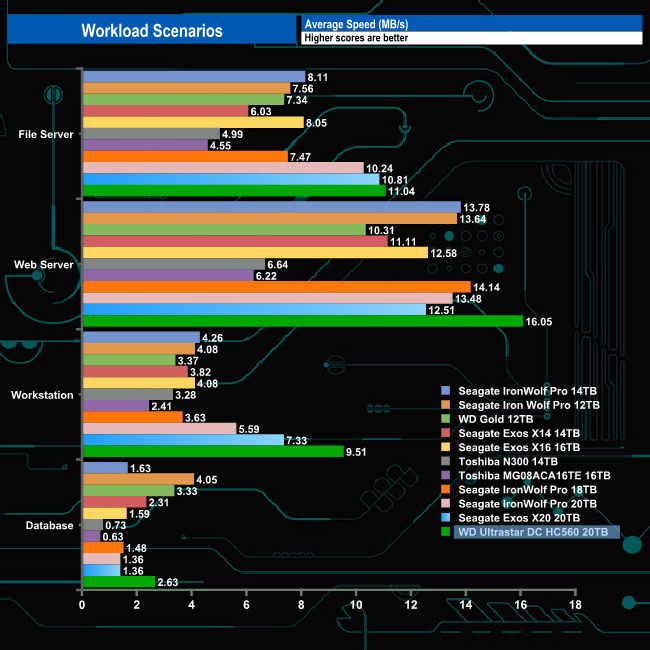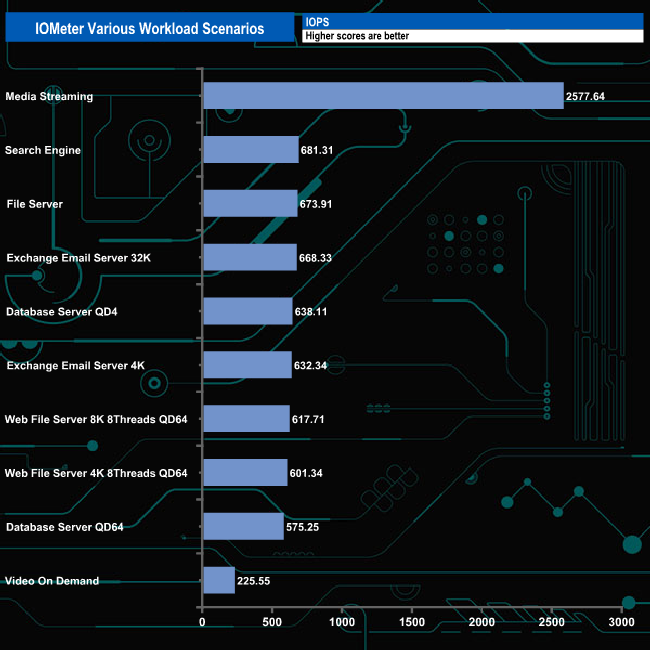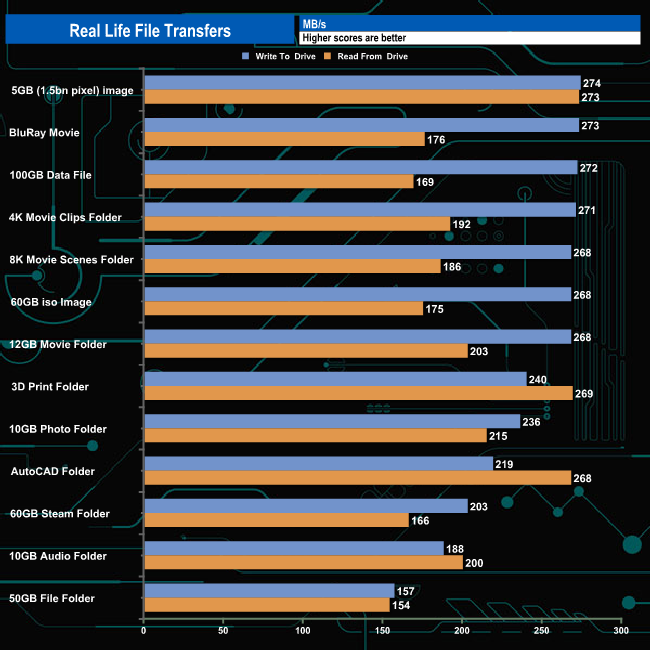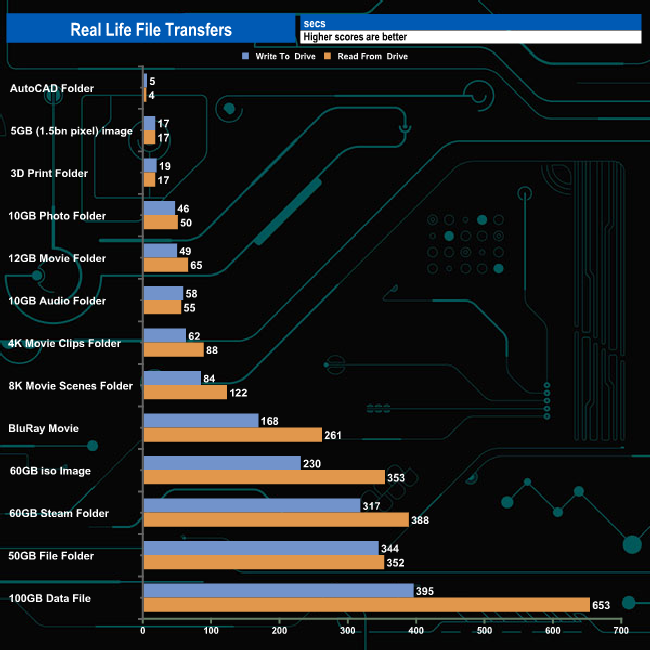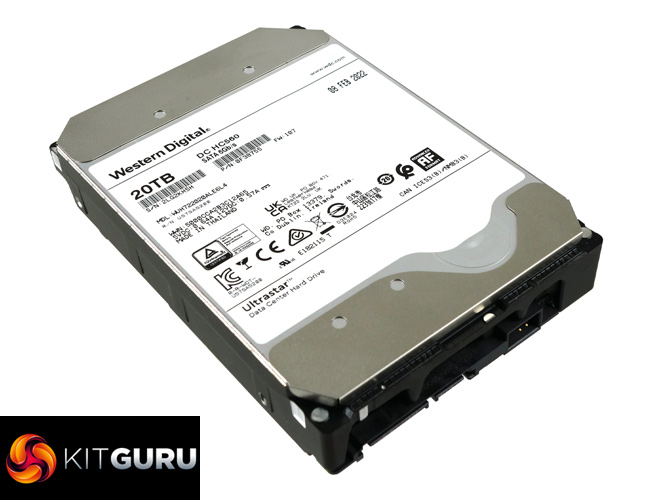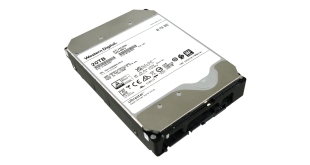
WD's 20TB Ultrastar DC HC560 aims to meet the storage needs of hyperscale cloud data centres and is the first drive to feature WD's OptiNAND and ePMR (Energy-Assisted Perpendicular Magnetic Recording) technologies. We put this drive through its paces and see what is on offer for the £400 asking price.
The 20TB DC HC560 uses nine 2.2TB discs, (each with an areal density of 1,131 Gbits/sq².) to reach its capacity, along with eighteen heads. It has a spindle speed of 7,200rpm, a 4.16ms average latency and has an impressive 512MB of cache. WD quote a maximum sustained transfer rate of 269MB/s for the drive.
At the time of writing this review, there are two versions of the DC HC560, the standard version we are looking at here (WUH722020ALE6L4) and a SED (Self Encrypting Drive) version (WUH722020ALE6L1).
The official power consumption figures for the drive are 7W when operating and 6W when idle.
WD quote a workload figure of up to 550TB/year for the DC H560 and back it with a 5-year warranty.
Physical Specifications:
- Usable Capacities: 20TB.
- Spindle Speed: 7,200rpm.
- No. Of Heads: 18.
- No. Of Platters: 9.
- Cache: 512MB.
- Recording Method: ePMR (Energy-Assisted Perpendicular Magnetic Recording).
- Interface: Serial ATA (SATA) 6Gb/s (SATA III)
- Form Factor: 3.5in.
- Dimensions: 26.1 x 101.6 x 147mm,
- Drive Weight: 690g.
WD's Ultrastar DC HC560 is built on a standard 3.5in format but with a height of 26.1mm. The drive has a spindle speed of 7,200rpm and there is 512MB of cache.
The drive uses 6th Gen WD HelioSeal technology enabling the enclosure to hold nine 2.2TB aluminium discs along with eighteen heads, the DC HD560 is the first WD drive to use a nine disk platform. To aid in fitting nine discs and all the other associated stuff inside the enclosure, WD has used thinner components than previous generations of drives. These include the top cover, the disks themselves, disc spacers and the actuator arm. Even the PCB has been slimmed down some 42%.
For testing, the drives are all wiped and reset to factory settings by HDDerase V4. We try to use free or easily available programs and some real-world testing so you can compare our findings against your own system.
This is a good way to measure potential upgrade benefits.
Main system:
Intel Core i7-7700K with 16GB of DDR4-3200 RAM, Sapphire R9 390 Nitro and an Asus Prime Z270-A motherboard.
Other drives:
Seagate NAS 8TB
Seagate Exos X16 16TB
Seagate Exos X14 14TB
Seagate Exos X20 20TB
Seagate IronWolf Pro 14TB
Seagate BarraCuda Pro 12TB
Seagate IronWolf Pro 12TB
Seagate IronWolf Pro 18TB
Seagate IronWolf Pro 20TB
Seagate IronWolf 10TB
Toshiba MG08ACA16TE 16TB
Toshiba N300 8TB
Toshiba NAS N300 14TB
Toshiba P300 3TB
Toshiba X300 6TB
WD Gold 12TB
WD Black 6TB
WD Black 4TB
WD Red 4TB
WD Red 8TB
Software:
Atto Disk Benchmark.
CrystalMark 6.0.0.
IOMeter.
PCMark 10 Data Drive Benchmark.
All our results were achieved by running each test five times with every configuration this ensures that any glitches are removed from the results.
CrystalDiskMark is a useful benchmark to measure theoretical performance levels of hard drives and SSD’s. We are using V6.0.0. to test HDD drives.
In the CrystalDiskMark 4K QD32 T1 test, the 20TB Ultrastar DC HC560 read test result of 3.451MB/s sees it sitting in third place in our results chart just behind the 14TB and 20TB IronWolf Pro's. However, its write result of 7.92MB/s is much better than both the Seagate drives and is by far the fastest write result for any WD HDD we've seen to date.
Looking at the benchmark result screen we could confirm the official transfer rate of 269MB/s with a Sequential read result of 272MB/s with writes coming in at 268MB/s.
The ATTO Disk Benchmark performance measurement tool is compatible with Microsoft Windows. Measure your storage system's performance with various transfer sizes and test lengths for reads and writes. Several options are available to customize your performance measurement including queue depth, overlapped I/O and even a comparison mode with the option to run continuously. Use ATTO Disk Benchmark to test any manufacturer's RAID controllers, storage controllers, host adapters, hard drives and SSD drives and notice that ATTO products will consistently provide the highest level of performance to your storage.
WD quote a maximum sustained transfer rate of 269MB/s for the drive. Using the ATTO benchmark we could confirm that figure with test results just shy of the maximum figure with reads at 260MB/s and writes of 261MB/s.
IOMeter is another open-source synthetic benchmarking tool that is able to simulate the various loads placed on a hard drive and solid-state drive technology.
We test with both random read and write 4k tests, as shown above. There are many ways to measure the IOPS performance of a hard drive, so our results will sometimes differ from the manufacturer’s quoted ratings. We do test all drives in exactly the same way, so the results are directly comparable.
In our 4K random read/write test, the drive produced a write figure of 924 IOPS making it the third-fastest drive we've seen to date when it comes to random writes. Its read performance at 517 IOPS isn't as strong.
In our throughput tests, reads peaked at 277MB/s (16MB block) while writes peaked at the 512KB block mark at 278MB/s before dropping back very slightly to finish the test run at 275MB/s. Both peak figures confirmed the official maximum transfer rate of 269MB/s.
With a peak read result of 277MB/s, the DC HC560 is the fastest HDD we've seen to date when it comes to read throughput.
When it comes to write throughput, the drive finishes the test run at 275MB/s, the second-fastest drive we've seen to date, just behind Seagate's Exos X20 20TB data centre focused drive.
We tested the WD Ultrastar DC HC560 with a number of scenarios that it may face in the real world. The settings for these scenarios are as follows.
File Server
512MB file size, 16KB Block size
80% Read 20% Write 100% Random
I/O queue depth 128
Web Server
1GB file size, 16KB Block size
100% Read 0% Write 100% Random
I/O queue depth 64
Database
2GB file size, 4KB Block size
90% Read 10% Write, 90% Random, 10% Sequential
I/O depth 128
Workstation
1GB file size, 16KB Block size
70% Read 30% Write, 100% Random, 0% Sequential
I/O depth 6
WD's Ultrastar DC H560 produces very strong performance in these workloads tests and is the fastest mechanical drive we've seen to date in three out of the four tests; File Server (11.04MB/s), Web Server (16.05MB/s) and Workstation (9.51MB/s). In the fourth Database test, the drive is the third-fastest we've seen.
We also tested the drive with some more datacentre centric workloads. The settings for these workloads are as follows.
Database Server QD4
Transfer Size: 4K , Reads: 67% Writes: 33%
Random: 100%, Threads/Workers: 4
Outstanding IO: 4
Database Server QD64
Transfer Size: 4K, Reads: 67% Writes: 33%
Random: 100% , Threads/Workers: 4
Outstanding IO: 64
Exchange Email 4K
Transfer Size: 4K, Reads: 67% Writes: 33%
Random: 100%, Threads/Workers: 4
Outstanding IO: 128
Exchange Email 32K
Transfer Size: 32K, Reads: 67% Writes: 33%
Random: 100%, Threads/Workers: 4
Outstanding IO: 128
Media Streaming
Transfer Size: 64K, Reads: 98% Writes: 2%
Sequential: 100%, Threads/Workers: 8
Outstanding IO: 64
Search Engine
Transfer Size: 4K, Reads: 100% Writes: 0%
Random: 100%, Threads/Workers:8
Outstanding IO: 128
Video On Demand
Transfer Size: 512K, Reads: 100% Writes: 0%
Random: 100%, Threads/Workers: 8
Outstanding IO: 64
Web File Server 4KB QD64
Transfer Size: 4K, Reads: 95% Writes 5%
Random: 75%, Threads/Workers: 8
Outstanding IO: 64
Web File Server 8KB QD64
Transfer Size: 8K, Reads: 95% Writes 5%
Random: 75%, Threads/Workers: 8
Outstanding IO: 64
The Media Streaming result of 2,577 IOPS is the fastest we've seen to date for an HDD. The slowest test result was the 222 IOPS for the Video On Demand test.
To test real life performance of a drive we use a mix of folder/file types and by using the FastCopy utility (which gives a time as well as MB/s result) we record the performance of drive reading from & writing to a 256GB Samsung SSD850 PRO.
We use the following folder/file types:
- 100GB data file.
- 60GB iso image.
- 60GB Steam folder – 29,521 files.
- 50GB File folder – 28,523 files.
- 12GB Movie folder – (15 files – 8 @ .MKV, 4 @ .MOV, 3 @ MP4).
- 10GB Photo folder – (304 files – 171 @ .RAW, 105 @ JPG, 21 @ .CR2, 5 @ .DNG).
- 10GB Audio folder – (1,483 files – 1479 @ MP3, 4 @ .FLAC files).
- 5GB (1.5bn pixel) photo.
- BluRay Movie – 42GB.
- 21GB 8K Movie demos – (11 demos)
- 16GB 4K Raw Movie Clips – (9 MP4V files).
- 4.25GB 3D Printer File Folder – (166 files – 105 @ .STL, 38 @ .FBX, 11 @ .blend, 5 @ .lwo, 4 @ .OBJ, 3@ .3ds).
- 1.5GB AutoCAD File Folder (80 files – 60 @ .DWG and 20 @.DXF).
The WD Ultrastar DC HC560 20TB drive had no problems dealing with any of our real-life file transfers and produced pretty consistent performance when it came to handling the larger file sizes with an average write figure for the seven large file transfers of 270MB/s with reads at 196MB/s. The slowest of the file transfers was the 50GB File Folder, full of small bity files, with writes at 154MB/s and reads at 157MB/s.
We've all heard, for a long, long time about the decline of the hard disk drive and how the rattly old spinning disks are no longer relevant now that SSD's seemingly rule the roost. Well, that may be true in the consumer market but in the enterprise segment, the hard drive is alive and well, and indeed thriving. IDC projects that HDDs will represent 82% of capacity sold to the enterprise market in 2025.
WD's latest addition to the Ultrastar family of data centre drives is the DC HC560 which comes with a huge 20TB of capacity, 512MB of cache and a 7,200rpm spindle speed. The drive has an official performance rating of up to 269MB/s.
Along with the 18TB Ultrastar DC HC550, the DC HC560 is the first WD drive to use a nine disk platform. The areal density of each disk in the DC HC560 is 1,160 Gbits/in² while the DC H550 has a density of 1,022 Gbits/in². The Ultrastar DC HC560 uses some of WD's leading-edge HDD technologies; OptiNAND, ePMR, TSA (Triple Stage Actuator) and HelioSeal.
OptiNAND technology is a flash-enhanced drive technology developed by WD that integrates an iNAND UFS embedded flash drive (EFD), using 3D NAND, that sits on the hard drive PCB. Unlike the hybrid drives of the past, user data isn't stored in the NAND (except in the case of power loss), instead the NAND is used by the SoC and the drives DRAM to store the self-generated drive metadata instead of holding it on the disks themselves, freeing up more usable space.
Another clever trick of OptiNAND is that it saves data to non-volatile NAND memory in case of sudden power loss. If power is lost during the write process the SoC uses the rotational power of the still spinning disks to power up internal capacitors until any cached data transfers to the non-volatile NAND.
In the never-ending quest to get more capacity per platter in a hard drive, areal densities are increasing which in turn leads to tracks getting ever narrower. The problem with narrow tracks is the threat of magnetic inter-track interference (ITI) disrupting the writer part of the drive head. To combat this, in the DC HC560, WD is using triple-stage actuator (TSA) technology. TSA uses three pivot points in the actuator arm to more accurately position the head over the data track.
As with TSA, Energy-Assisted Perpendicular Magnetic Recording (ePMR) is another technology developed to overcome the problems associated with high areal density disks particularly “jitters”. Jitters occur when the write current at the recording head is flipped from one direction to another. ePMR applies a constant electrical current to the main pole of the write head throughout the write process, producing a more consistent, preferred signal path that helps to reduce jitter. Reducing jitters allows for the reduction of space between bits written which in turn allows for greater areal densities and larger capacities.
WD quote a sustained transfer rate of 269MB/s for the 20TB DC HC560. When tested with the ATTO benchmark we could confirm that figure with test results of 260MB/s and 261MB/s for Sequential read and writes respectively. The drive also performed very well in our workload scenarios, producing the best performance figures we've seen to date for an HDD in the File Server, Web Server and Workstation tests.
We found the WD Ultrastar DC HC560 on sale for £369.98 (temporarily reduced from £399.98) from Scan HERE.
Discuss on our Facebook page HERE.
Pros
- Overall performance.
- Drive technologies.
- 5-year warranty.
Cons
- Not cheap.
KitGuru says: WD's Ultrastar DC HC650 introduces some HDD technologies that point the way forward in terms of dealing with the problems posed by using platters with greater and greater areal densities, enabling even larger capacity drives in the future.
 KitGuru KitGuru.net – Tech News | Hardware News | Hardware Reviews | IOS | Mobile | Gaming | Graphics Cards
KitGuru KitGuru.net – Tech News | Hardware News | Hardware Reviews | IOS | Mobile | Gaming | Graphics Cards


